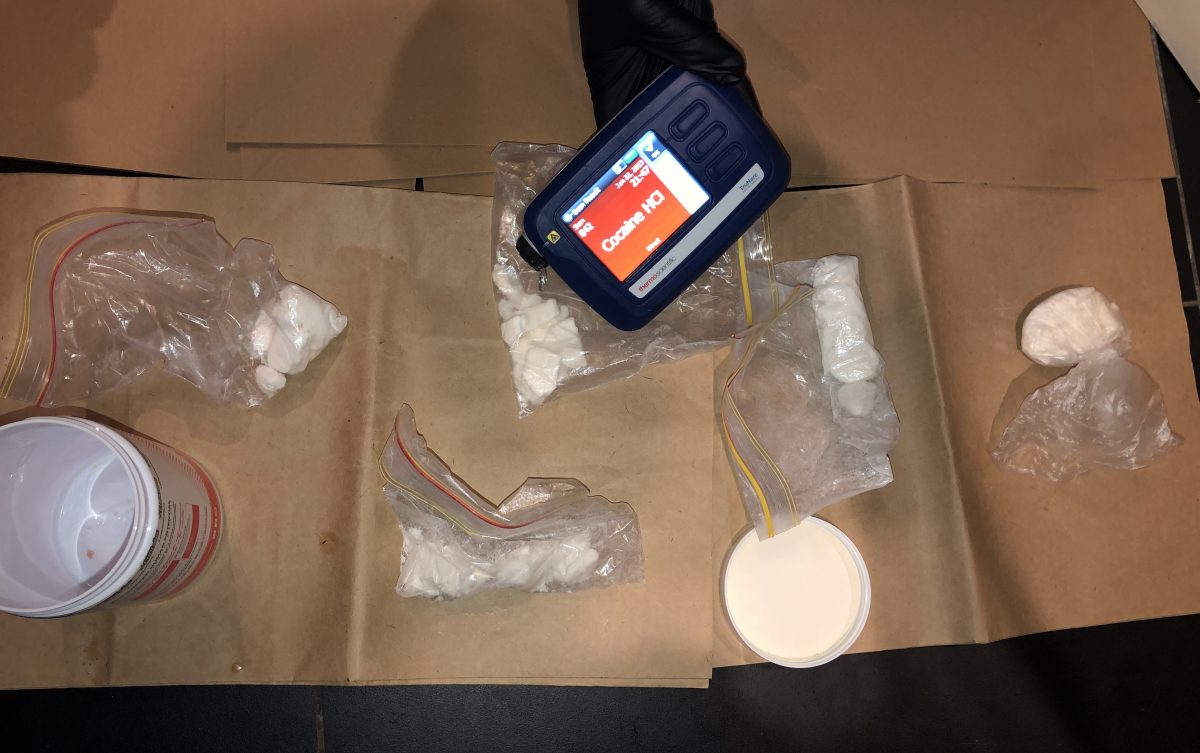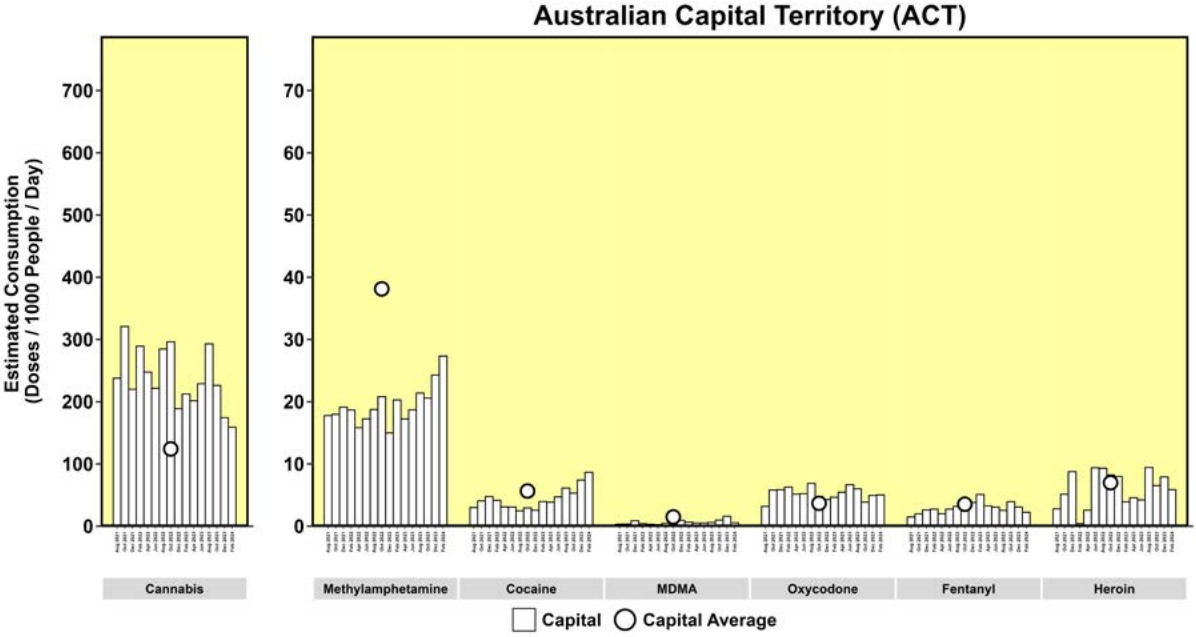
A cocaine haul with an estimated street value of $100,000 was seized in Canberra last year. Photo: ACT Policing.
The ACT has an increasing appetite for illegal stimulants, particularly cocaine, according to the latest findings from the National Wastewater Drug Monitoring Program.
The Australian Criminal Intelligence Commission (ACIC) has released its 22nd report based on data collected in December 2023 (regional and capital city sites) and February 2024 (capital city sites only).
It shows cocaine use in the national capital steadily increasing to above average capital levels.
This reflects the growing consumption of the drug across the nation.
In December 2023, the national average consumption for capital cities and regional areas was at the highest level since reporting began in August 2016.
Consumption has been increasing in most jurisdictions since the record lows in August 2022.
Methylamphetamine was also increasingly popular in the ACT over the reporting period but was still well below average for capital cities.
Nationally, the report found record methylamphetamine consumption in capital cities, while in the regions, average use was the highest since April 2020.
MDMA use in Canberra spiked above the capital city average in December but slumped in February. Consumption levels have generally been increasing since April 2022.
National average MDMA consumption at capital city and regional sites in December 2023 was at its highest level since August 2020.
Cannabis remains a popular drug in the ACT, and consumption is still above the capital city average, but its use actually declined over the reporting period.
Consumption is substantially higher on average in regional areas than in capital cities, where several reached their lowest levels of cannabis use in the past two years.

Cannabis consumption is still above the capital city average, but its use declined over the reporting period. Image: ACIC.
ACIC said international data reaffirmed the pronounced preference in world terms for illicit stimulants among Australian drug consumers, with Australia ranking fourth out of 34 participating nations.
It said findings further underscored the prevalence of methylamphetamine in the national stimulant market, with Australia recording the second-highest per capita consumption of methylamphetamine compared to 29 other countries.
Australia also ranked 20th of 32 countries for cocaine consumption, 15th of 33 countries for MDMA consumption and third of 20 countries for cannabis consumption.
ACIC CEO Heather Cook said the data was a stark reminder of the persistent and evolving challenge of drug use and its implications for public health and safety.
“As we continue to combat this issue, it is crucial to understand underlying factors contributing to these trends and to develop targeted strategies to address them,” Ms Cook said.
She said wastewater analysis allowed ACIC to engage meaningfully with international agencies on transnational drug threats.
” Working alongside our domestic law enforcement partners, certain investigations now integrate targeted, high-intensity wastewater analysis to gauge the impact of law enforcement actions,” Ms Cook said.
“Additionally, wastewater analysis is increasingly used as a key element in drug ‘early warning’ systems, enhancing the ability to anticipate and respond to emerging drug threats.”
Opioid use has been steady, with heroin consumption much higher in the capital cities than in the regions, while oxycodone and fentanyl use is higher in regional Australia.
Alcohol and nicotine were the most consumed drugs in all states and territories in December 2023, followed by cannabis and methylamphetamine.
Nicotine consumption has been increasing since August 2022. It is now at a record high level, but alcohol consumption has been decreasing in many states and territories and nationally over the past two years.





















